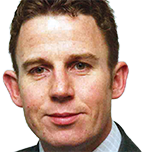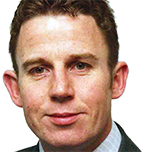Act now to make the most of tax breaks
It’s important to use pension allowances before you lose them, says David Prosser.


With Philip Hammond forced to walk away from his controversial budget plans for higher national insurance contributions, pensions tax relief may be a tempting target as the chancellor looks elsewhere for the £2bn his first proposal would have raised. The uncertainty of the future of pensions underlines the need for savers to make full use of the current system while they still can.
With less than two weeks to go before the end of the tax year on 5 April, sources close to the chancellor have been briefing the press that the tax breaks on pensions could be reduced from the 2017-2018 tax year onwards, implying that changes could come in the autumn budget. Still, even leaving aside this threat, it's important to use pension allowances before you lose them. Tax reliefs may or may not be less generous in future, but if you delay, some of your current allowances will be gone for good.
For the current tax year, the annual allowance the maximum permitted investment in a private pension is £40,000, though you can't invest more than your taxable earnings. Note that the figure includes contributions from your employer and is an aggregate figure across all the schemes you pay into.
MoneyWeek
Subscribe to MoneyWeek today and get your first six magazine issues absolutely FREE

Sign up to Money Morning
Don't miss the latest investment and personal finances news, market analysis, plus money-saving tips with our free twice-daily newsletter
Don't miss the latest investment and personal finances news, market analysis, plus money-saving tips with our free twice-daily newsletter
If you're not taking full advantage of this allowance and you're in a financial position to do so, consider increasing your contributions before the end of the tax year. You qualify for tax relief at your highest marginal rate of taxation, so it costs only £550, £600 and £800 for additional-rate, higher-rate and basic-rate taxpayers respectively to pay £1,000 into their pension schemes. However, note that special rules have applied to high earners since the start of this tax year. For those on incomes between £150,000 and £210,000, the annual allowance reduces by £1 for every £2 extra you earn, until it's limited to £10,000 on earnings of £210,000 or more.
High earners will want to ensure they're using their full allowance, but it may be especially worthwhile for them to use the carry-forward rules. These are potentially useful to all savers since they enable you to make use of unused annual allowance for each of the past three years. That has the potential to add up to £130,000 to your annual allowance this year (if you have sufficient relevant earnings this year), since until the 2013-14 tax year the allowance was £50,000.
However, remember that there is also the lifetime allowance to take into consideration. If your total pension savings, including all contributions and investment returns, exceed £1m, you'll have to pay extra tax charges on the excess amount. Those who have already breached the ceiling should act now to mitigate the impact. Special protection schemes apply to those whose pension savings exceeded £1m on 5 April 2016, when the lifetime allowance was reduced from £1.25m, and for those whose savings were worth more than £1.25m in April 2014, when it came down from £1.5m. But you must apply for these schemes before the end of the tax year, via HM Revenue & Customs.
Finally, there's another change that may catch those who have already begun taking benefits. From 6 April, the money purchase annual allowance falls from £10,000 to £4,000. This is the maximum you may pay into your pension each year if you've started taking out money via income drawdown. The government wants to stop people from withdrawing money and paying it back in to get a double slice of tax relief, but the change will affect a wide range of savers those still working and drawing some money from their pension to supplement their income, for example. If you're affected by this change, you can use the last weeks of this tax year to take advantage of the higher existing allowance.
Get the latest financial news, insights and expert analysis from our award-winning MoneyWeek team, to help you understand what really matters when it comes to your finances.

David Prosser is a regular MoneyWeek columnist, writing on small business and entrepreneurship, as well as pensions and other forms of tax-efficient savings and investments. David has been a financial journalist for almost 30 years, specialising initially in personal finance, and then in broader business coverage. He has worked for national newspaper groups including The Financial Times, The Guardian and Observer, Express Newspapers and, most recently, The Independent, where he served for more than three years as business editor.
-
 How to profit from the markets’ pessimism about Britain
How to profit from the markets’ pessimism about BritainOpinion There was little in the Budget to prop up Britain's stock market, but opportunities are hiding in plain sight. Investors should take advantage while they can
-
 London claims victory in the Brexit wars
London claims victory in the Brexit warsOpinion JPMorgan Chase's decision to build a new headquarters in London is a huge vote of confidence and a sign that the City will remain Europe's key financial hub